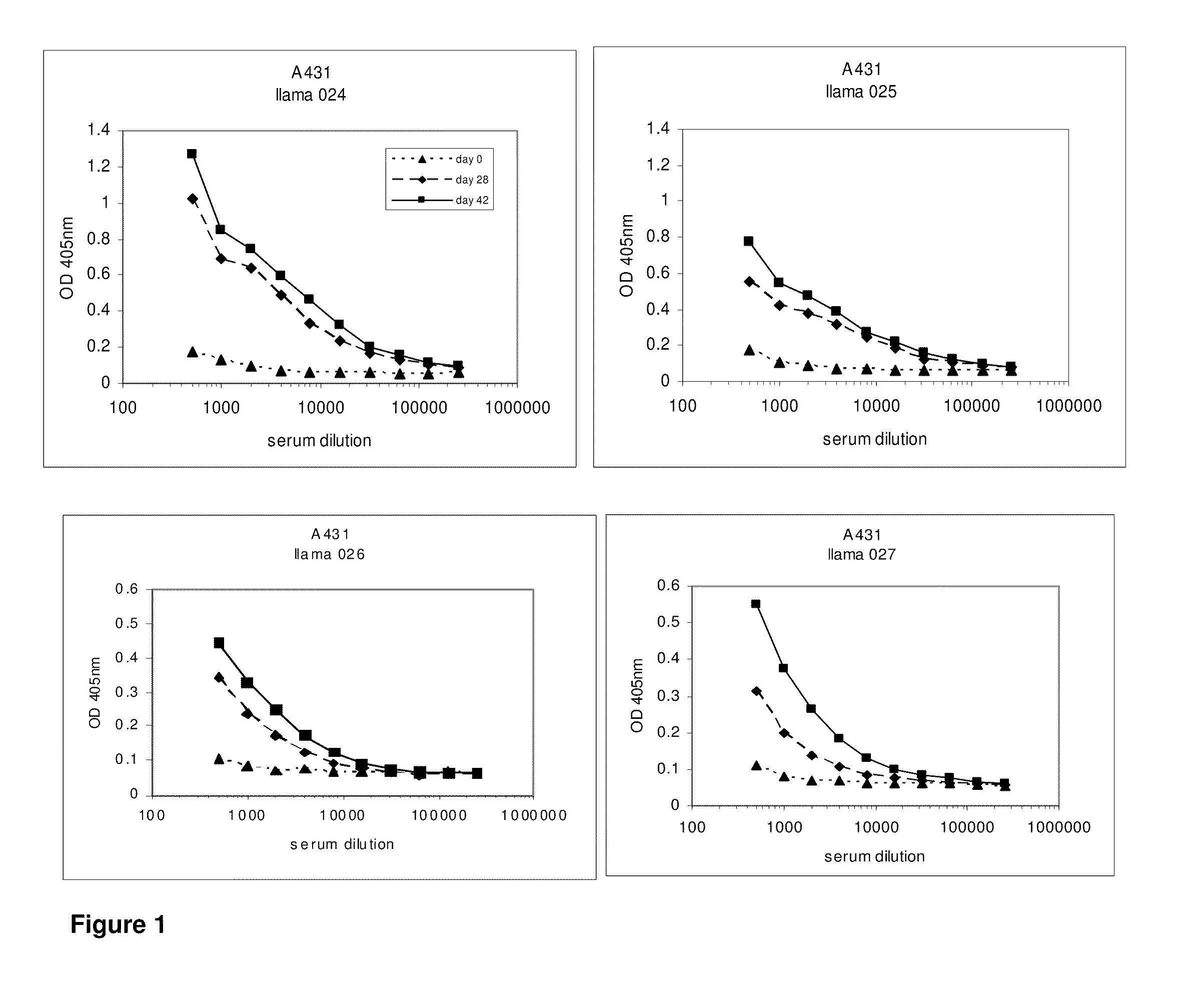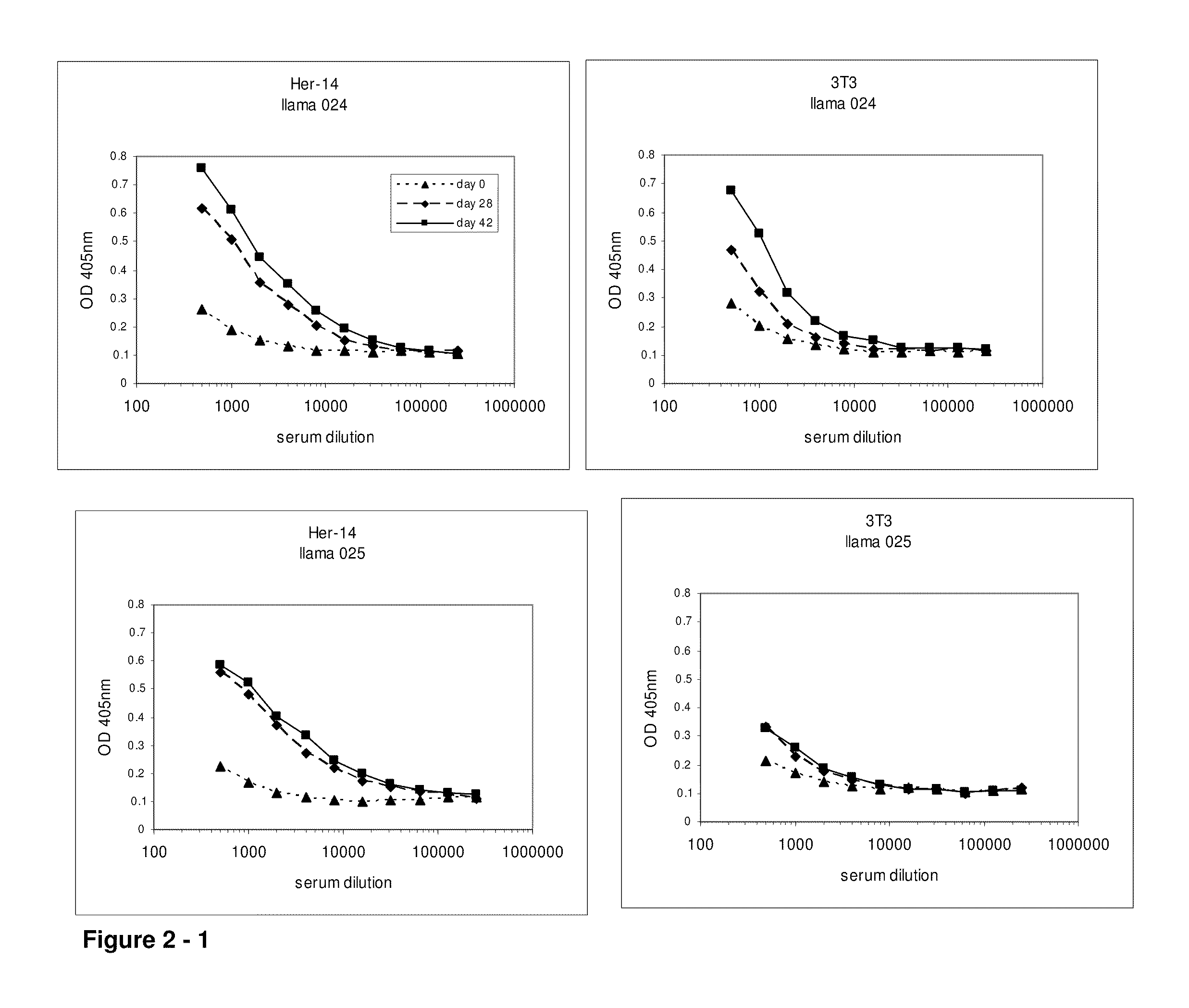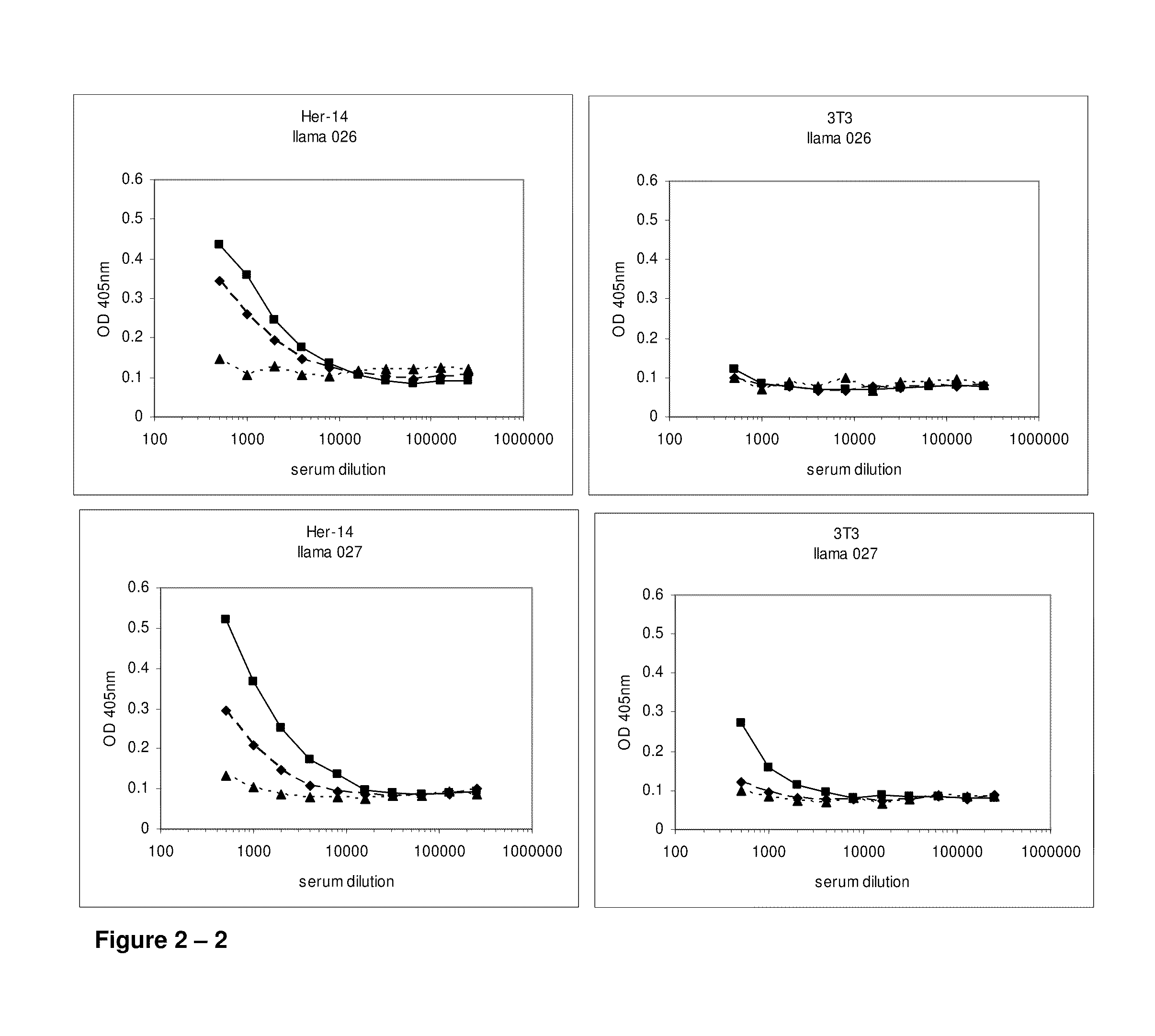Single domain antibodies directed against epidermal growth factor receptor and uses therefor
a technology of epidermal growth factor and single-domain antibodies, which is applied in the field of single-domain antibodies, can solve the problems of inability to completely treat cancer with these antibodies, inability to fully develop, and inability to meet the needs of patients, so as to improve the permeability of the intestinal mucosa, and improve the effect of permeability
- Summary
- Abstract
- Description
- Claims
- Application Information
AI Technical Summary
Benefits of technology
Problems solved by technology
Method used
Image
Examples
example 1
Immunization
[0610]After approval of the Ethical Committee of the Faculty of Veterinary Medicine (University Ghent, Belgium), 4 llamas (024, 025, 026 and 027) were immunized with the tumor antigen epidermal growth factor receptor (EGFR) according to all current animal welfare regulations. To generate an antibody dependent immune response (table 1), two animals were injected with intact human vulvar squamous carcinoma cells (A431, ATCC CRL 1555), expressing EGFR on its cell surface, while A431 derived membrane extracts were administered to two other llamas (026 and 027). Each animal received seven doses of subcutaneously administered antigens at weekly intervals (table 1). When immunizing with intact cells, each dose consisted of 108 freshly harvested A431 cells. The dose for immunization with membrane extracts consisted of vesicles prepared from 108 A431 cells. Vesicles were prepared according to Cohen and colleagues (Cohen S, Ushiro H, Stoscheck C, Chinkers M, 1982. A native 170,000...
example 2
Evaluation of Immune Response
[0611]At day 0, 28 and 42, 10 ml of (pre-)immune blood was collected and serum was used to evaluate the induction of the immune responses in the 4 animals. A first ELISA was performed to verify whether the animals generated antibodies that recognized A431 epitopes. After coating a tissue-culture treated 96-well plate with gelatin (0.5% in PBS for 10 minutes), the excess of gelatin was removed and A431 cells were grown overnight in the microwells to confluency. Cells were fixed with 4% paraformaldehyde in PBS for 30 minutes at room temperature. Subsequently, the fixative was blocked with 100 mM glycine in PBS for 10 minutes, followed by blocking of the wells with a 4% skim milk-PBS solution, again for 10 minutes. Serum dilutions of immunized animals were applied and A431 specific antibodies were detected with a polyclonal anti-llama antiserum developed in rabbit, followed by a secondary goat anti-rabbit horse radish peroxidase (HRP) conjugate (Dako, Denma...
example 3
Cloning of the Heavy-Chain Antibody Fragment (VHH) Repertoire
[0613]Since little is known on the immunoglobulin ontogeny of camelids, B-cell containing tissues of distinct origin and of different time points were collected for each animal (table 1). After tissue collection, total RNA was isolated according to the procedure described by Chomczynski and Sacchi. (Chomczynski P and Sacchi N. 1987. Single-step method of RNA isolation by acid guanidinium thiocyanate-phenol-chloroform extraction. Anal Biochem 162:156-159). The procedure to clone the VHH repertoire is based on a method described in patent application WO 03 / 054016. cDNA was prepared on total RNA with MMLV Reverse Transcriptase (Invitrogen) using oligo d(T) oligonucleotides (de Haard H J, van Neer N, Reurs A, Hufton S E, Roovers R C, Henderikx P, de Bruine A P, Arends J W, Hoogenboom H R. 1999. A large non-immunized human Fab fragment phage library that permits rapid isolation and kinetic analysis of high affinity antibodies. ...
PUM
| Property | Measurement | Unit |
|---|---|---|
| temperatures | aaaaa | aaaaa |
| particle size | aaaaa | aaaaa |
| particle size | aaaaa | aaaaa |
Abstract
Description
Claims
Application Information
 Login to View More
Login to View More - R&D
- Intellectual Property
- Life Sciences
- Materials
- Tech Scout
- Unparalleled Data Quality
- Higher Quality Content
- 60% Fewer Hallucinations
Browse by: Latest US Patents, China's latest patents, Technical Efficacy Thesaurus, Application Domain, Technology Topic, Popular Technical Reports.
© 2025 PatSnap. All rights reserved.Legal|Privacy policy|Modern Slavery Act Transparency Statement|Sitemap|About US| Contact US: help@patsnap.com



